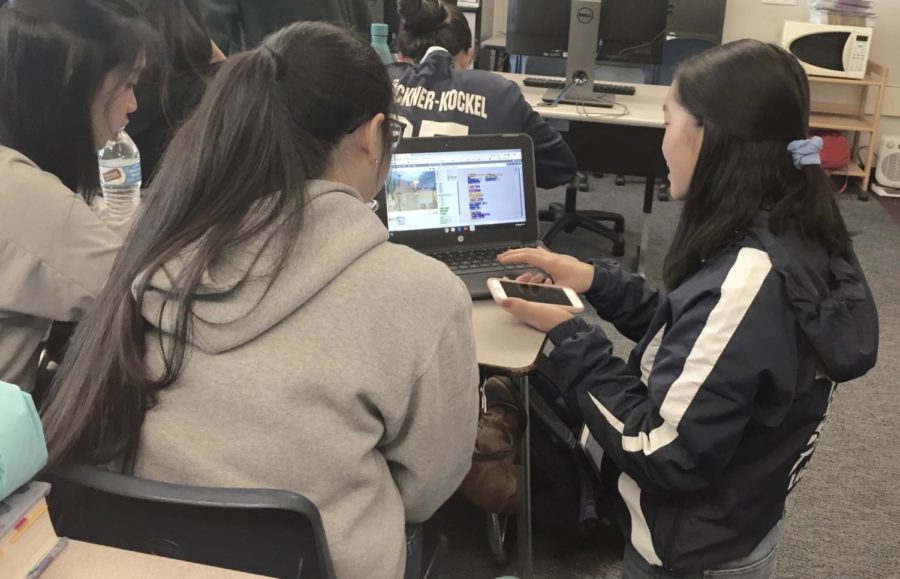Only one out of every five people in the technology industry are women.
The Girls Who Code Club strives to change that statistic by hosting a welcoming environment for high school girls to learn code.
The club is run by Jessica Yu, a junior, but is structured by the Girls Who Code organization. In each meeting, members learn more about code at their respective levels through a curriculum made by the Girls Who Code organization. Then, they watch a video about a successful woman in the tech industry.
“This club focuses on closing the gender gap in technology because right now only about less than one-fifth of the technology career is women, so we want to bring more diversity to technology,” Yu said.
The tech industry has drastically grown in the past 20 years, however, so has the gender gap in that line of work. To combat this, organizations such as Girls Who Code offer coding programs for girls from third to twelfth grade.
Karyn Voldstad, chair of the computer science department and teacher of multiple computer science classes said, “It’s a perennial problem that there are not as many females in the computer science field as there are men, and a lot of it is the perception that it’s not fun, it’s not social, it’s not socially relevant, it’s not meaningful, and the Girls Who Code club tries to break down some of those stereotypes and give girls a better understanding of how they could really have fun doing computer science.”
This club helps girls interested in coding as a profession and allows those who just want to learn more about it by having an approachable environment.
Shiina Sugioka, a junior, said, “My friends are in this club, and I had a really small background in coding so I wanted to start learning about it some more.”
The club’s structure of doing some individual coding followed up by watching a video about a woman in code helps the girls build confidence in their coding skills in a comfortable environment.
“They talk about some kind of intimate things in some of the videos like how you feel about things, and that tends to break down barriers,” Voldstad said.
[/infographic]

